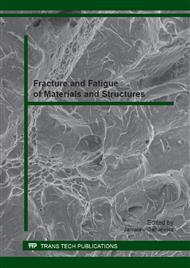p.45
p.51
p.57
p.63
p.69
p.75
p.81
p.86
p.92
High Power Actuator Based on Magnetostrictive Composite Core with Temperature Drift Compensation
Abstract:
The paper presents an actuator based on a coil placed in the casing, with specially prepared connection rods. The construction allows installation of the fiber Bragg grating sensors inside the coil. It allows to measure deformation of the composite that is located in the core of the coil. Thanks to the signal generation with use of DASYLab software, it is possible to precisely control the frequency, value of amplitude excitation and to send the signal to the system with use of the measurement card. The main goal of the experiment is to keep constant value of deformation, by means of a feedback loop with use of PID control, and to change the initial conditions of the test by change of the external force. The system is designed to return to the initial settings by appropriate control of the intensity of magnetic field, and thus the deformation of the sample.
Info:
Periodical:
Pages:
69-74
Citation:
Online since:
January 2014
Authors:
Keywords:
Price:
Сopyright:
© 2014 Trans Tech Publications Ltd. All Rights Reserved
Share:
Citation:


